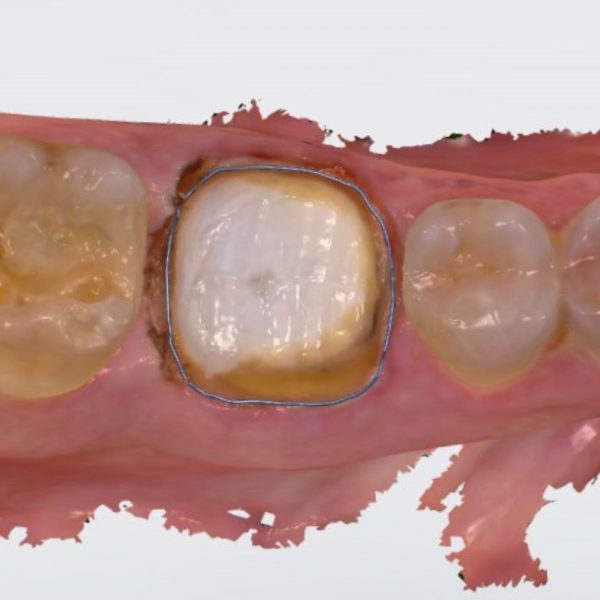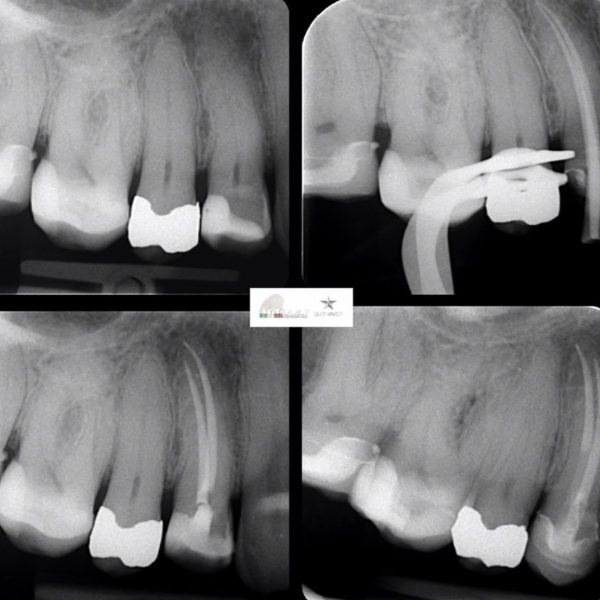
Endo-resto treatment of a lower molar in a patient with aligners. Modified stamp technique
16/09/2020
Francesca Cerutti
Warning: Undefined variable $post in /var/www/vhosts/styleitaliano-endodontics.org/endodontics.styleitaliano.org/wp-content/plugins/oxygen/component-framework/components/classes/code-block.class.php(133) : eval()'d code on line 2
Warning: Attempt to read property "ID" on null in /var/www/vhosts/styleitaliano-endodontics.org/endodontics.styleitaliano.org/wp-content/plugins/oxygen/component-framework/components/classes/code-block.class.php(133) : eval()'d code on line 2
The stamp technique is a well known way to reproduce accurately the occlusal anatomy of the tooth. It allows to restore quickly and in a predictable way even class II cavities and anterior teeth (as shown in this article by Giuseppe Marchetti https://www.styleitaliano.org/fast-single-shade-anterior-restorations-flowable-composite-the-stamp-technique).
In the following case report I adapted the stamp technique to the clinical situation I had to face when a 26 year old patient was referred to me for irreversible pulpitis occurring after breaking the lingual wall of the lower left first molar.
The patient was wearing a clear aligner device, with an attachment positioned on the 3.6
I spoke to the orthodontist that told me that she would have preferred to avoid taking new orthodontic records and impressions. Even the patient did not want to take new records, so I had to find a way to do the endo-resto treatment reproducing as precisely as possible the original shape of the tooth.
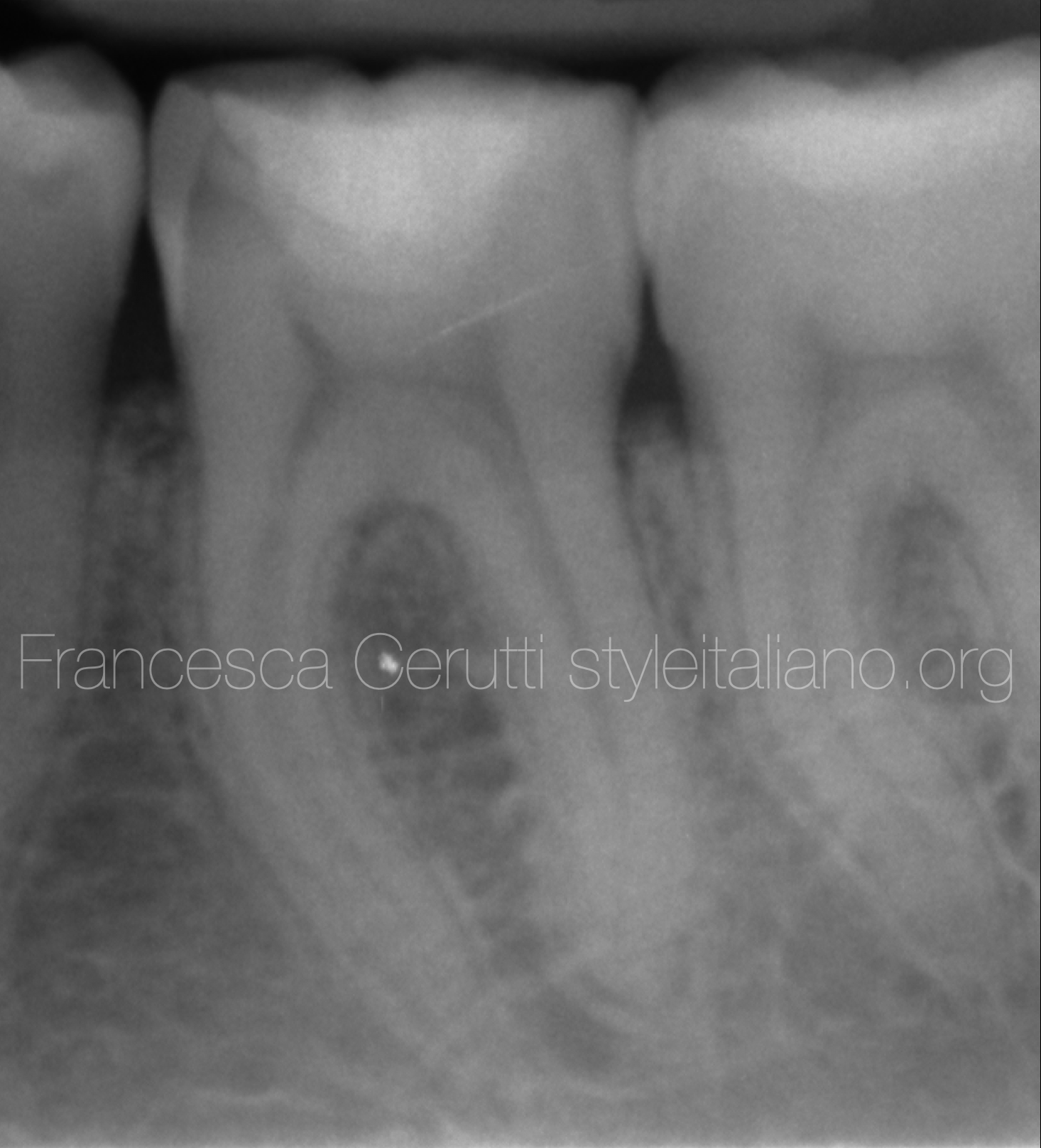
Fig. 1
The pre-operative x-ray shows the lack of hard tissue in the mesial aspect of the tooth
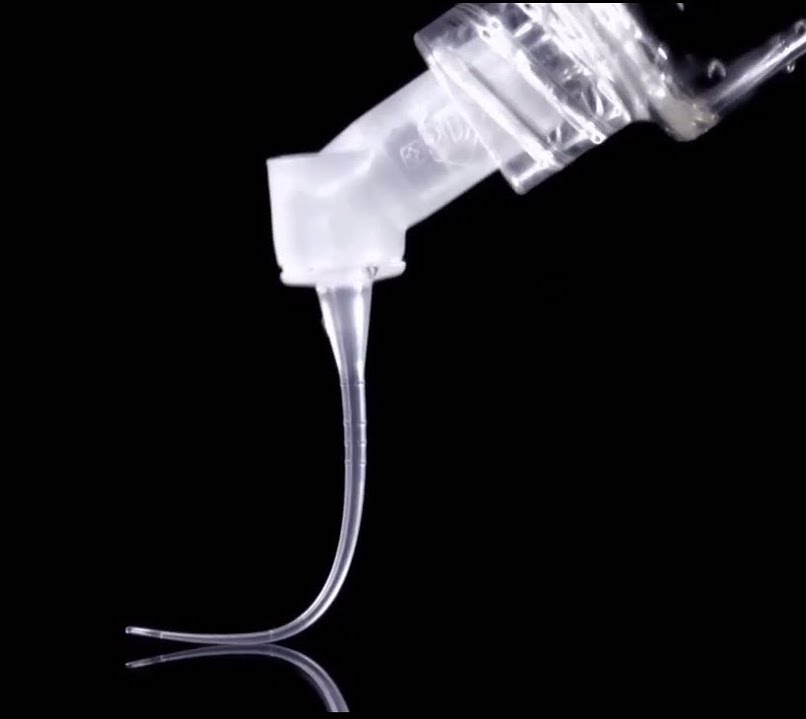
Fig. 2
After shaping the root canal system, I used a flexible irrigation cannula to irrigate up to the working length

Fig. 3
I filled the root canal system with the warm vertical compaction technique, then I placed a temporary restoration

Fig. 4
Five days later the patient was scheduled for changing the aligner, so I asked her to bring her old aligner with her.
I cut the aligner in order to have a transparent mold of the first left lower molar
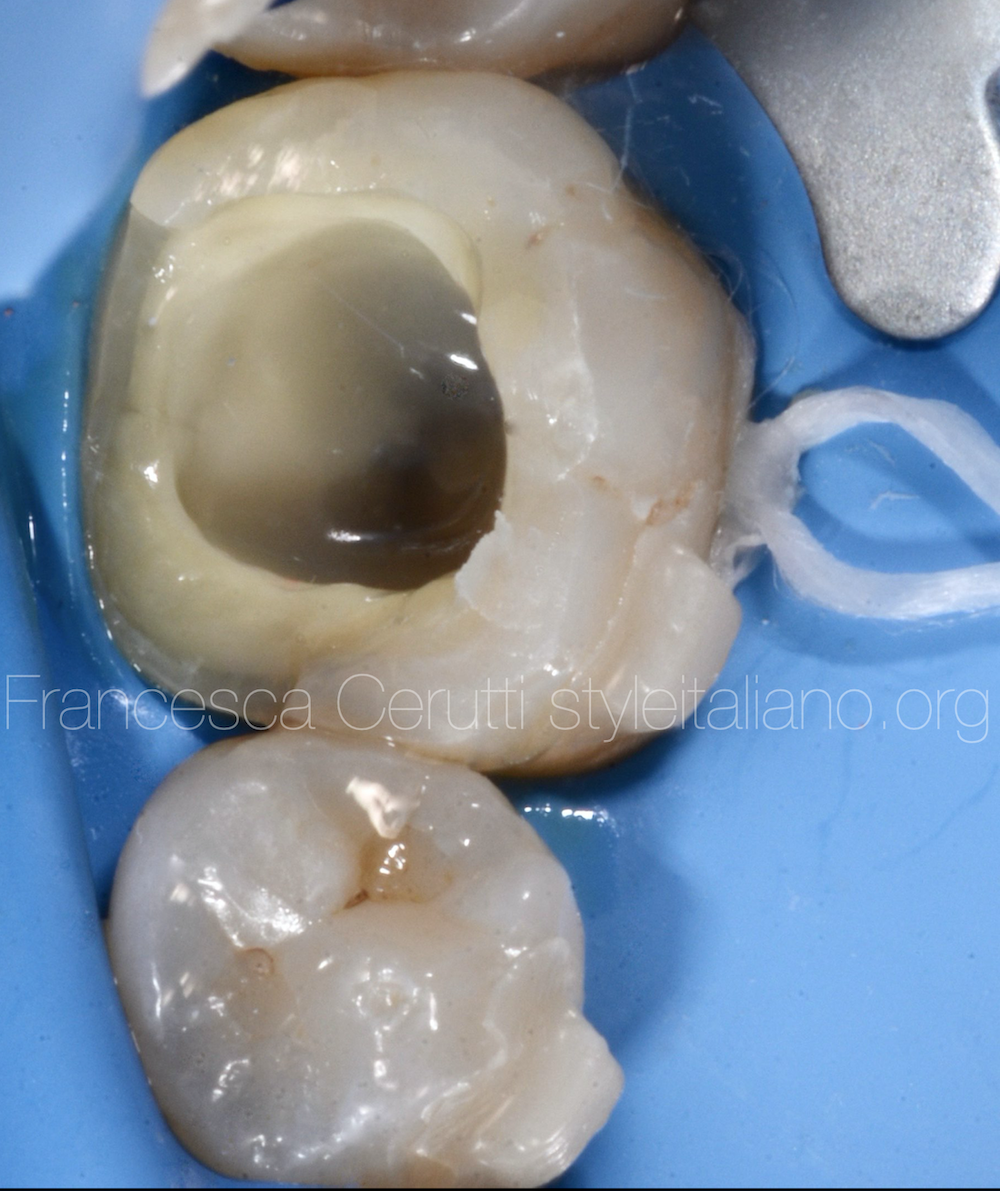
Fig. 5
After checking the correspondence between the mold and the tooth, I placed a thin layer of flowable composite over the pulp chamber
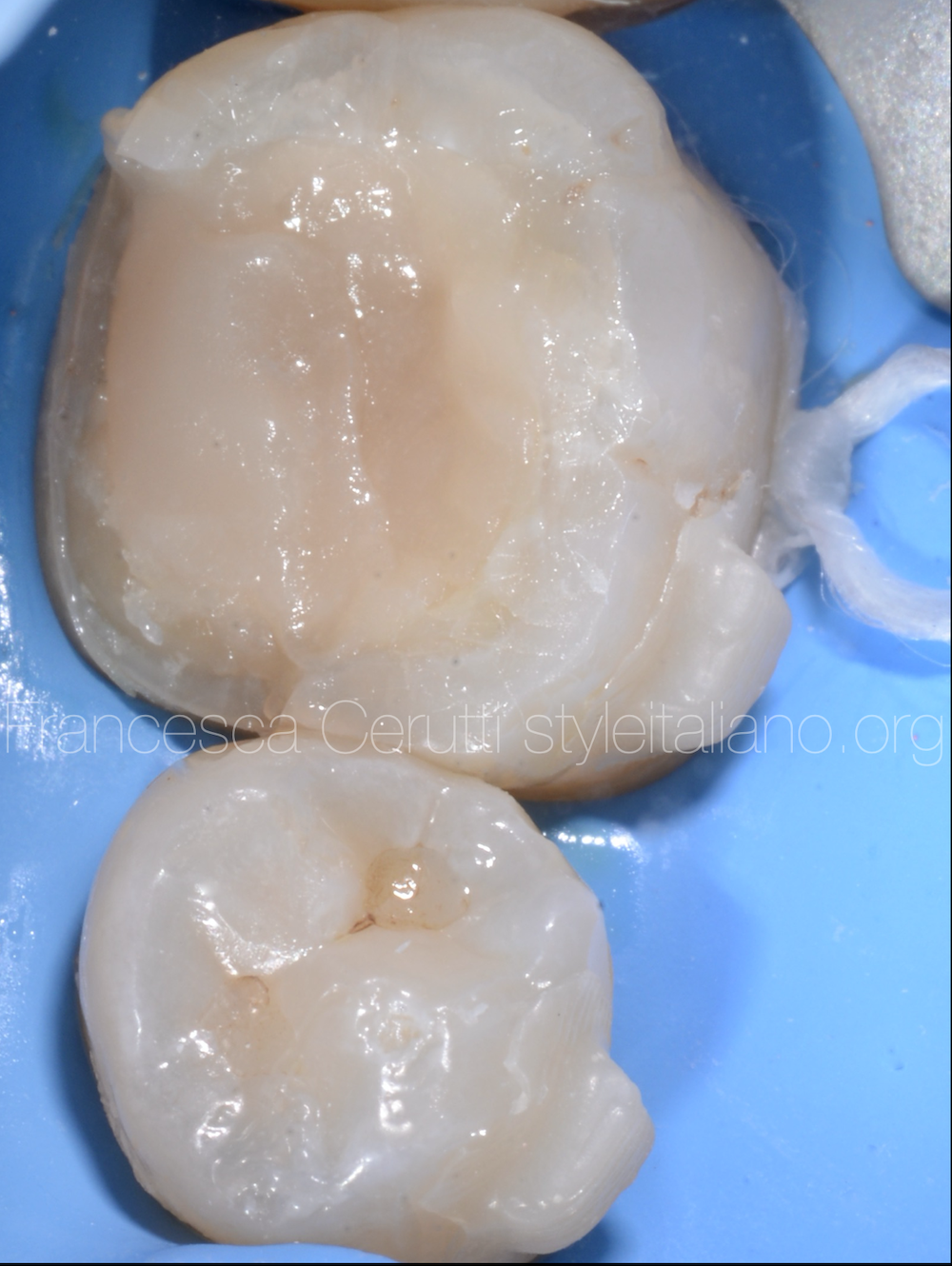
Fig. 6
Then, I did a build up in order to reduce the amount of composite placed in the same time: this allows reducing the polymerization shrinkage and stress.
I kept the build up away from the margins of the cavity

Fig. 7
I put some enamel shade composite into the mold and a thin layer of flowable composite on the margins of the tooth, then I placed the mold in position.
I removed the excesses, then I light cured the composite
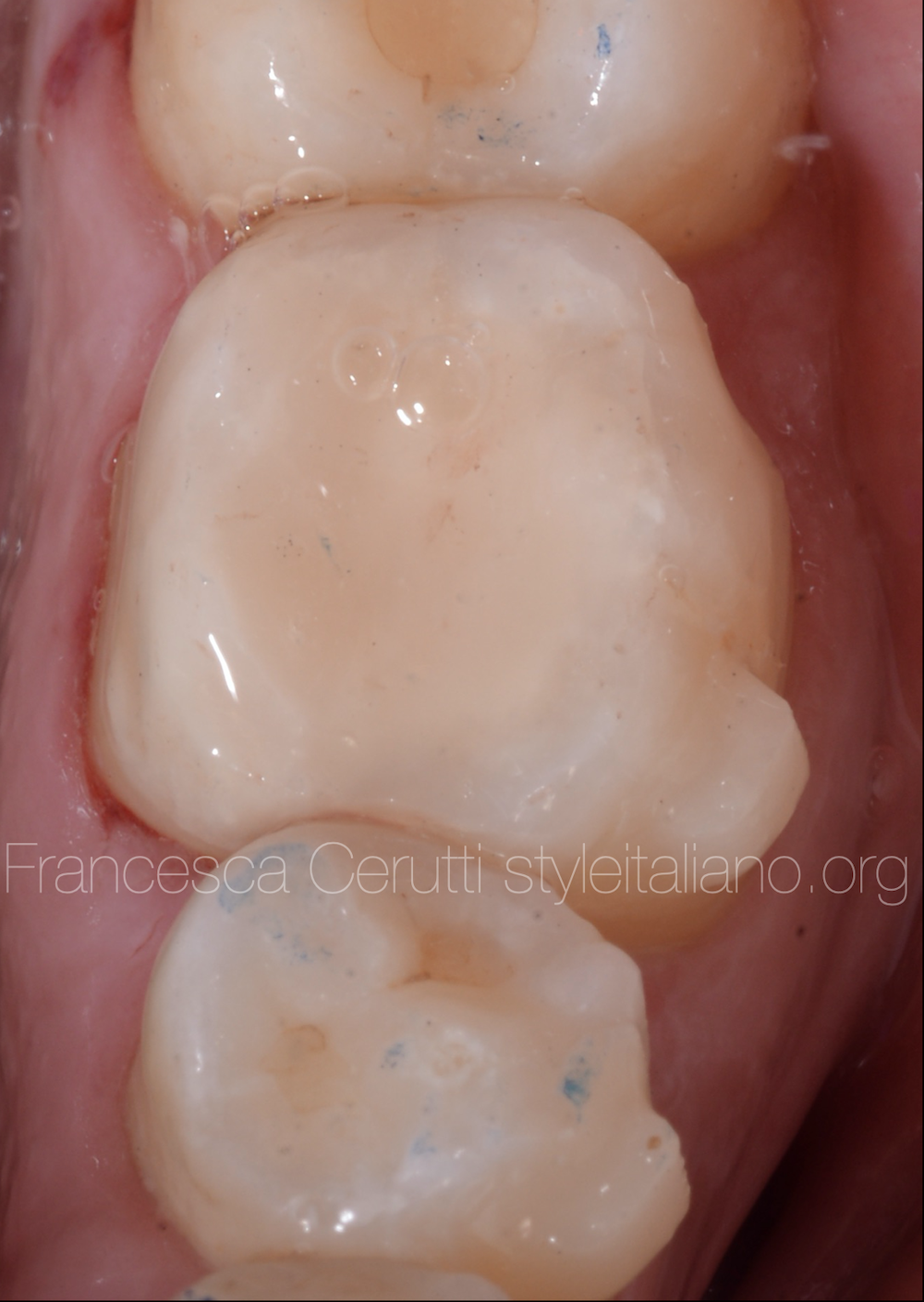
Fig. 8
After this, I removed the mold and polished the restoration.
I agreed with the patient and the orthodontist that, at the end of the orthodontic treatment an indirect restoration will be made on this tooth.
Subsequently, they will take the impression for the retainer.
Conclusions
The stamp technique can be helpful in restoring teeth in patient with aligners because it can reproduce accurately the shape of the tooth in a short time. Its use can avoid taking new impressions, prolonging the time of the orthodontic treatment.
Bibliography
Ramseyer ST, Helbling C, Lussi A. Posterior vertical bite reconstructions of erosively worn dentitions and the “stamp technique” – A case series with a mean observation time of 40 months. J Adhes Dent. 2015;17:283–9
Alshehadat SA, Halim MS, Carmen K, Fung CS. The stamp technique for direct Class II composite restorations: A case series. J Conserv Dent. 2016;19(5):490-493. doi:10.4103/0972-0707.190021
Diaz Guzman E. Full-mouth rehabilitation with the flowable injection technique. QTD International 2018



